Daylighting Storm Shelters with Solatube
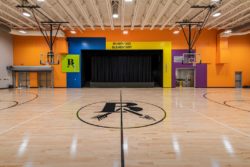
Twister. Funnel. Whirlwind. A tornado by any other name is still considered the deadliest and most destructive natural disaster on earth. Occurring on all continents except Antarctica, tornadoes have both terrified and fascinated mankind for centuries.
The U.S. averages almost 1,300 tornadoes per year, more than all other continents combined. Yet, surprisingly, it wasn’t until 1950 that the U.S. began to document tornadic events. Compared to winter storms, hurricanes and floods, tornado history is still in its relative infancy.
Even with today’s most modern studies, analyses, instruments and technology, tornado behaviors continue to baffle and mystify experts, leading them to ask (and often disagree) on questions such as:
- What conditions cause tornadoes?
- What is truly happening inside a tornado?
- How do we better analyze the results of a tornado’s impact?
- How do we protect ourselves when a tornado strikes?
It is this last question that has driven architects, engineers and the construction industry to develop codes and guidelines such as ICC 500 and FEMA P-361 that will in part, help to ensure the proper construction of tornado shelters in order to save lives.
Categorizing Tornadoes
To build a better storm shelter, we must try to better understand how and what a tornado can destroy. For many years, the lack of recorded historical data or a standard for categorizing tornadoes made it difficult at best to establish what, if anything, could actually provide protection in the event of a twister.
It wasn’t until 1971 that the efforts of engineer and meteorologist Dr. Tetsuya Fujita developed a way to categorize tornadoes.
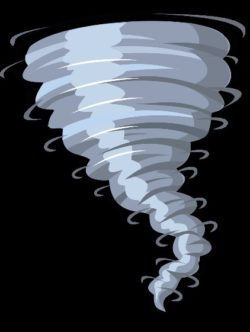
Through his decades-long research of weather systems and his on-site analysis of the destruction from various tornadoes, Dr. Fujita created the Fujita Scale, or F scale, which assigned tornadoes an intensity factor level from F0 to F5. The tornado’s intensity could only be determined after the tornado had passed, as levels were based on surveying the damage caused to a limited type of man-made structures and vegetation.
For 40 years, the Fujita Scale was used to classify a tornado’s intensity—until two incredibly violent tornadoes caused experts to reconsider the F Scale’s accuracy. On May 27, 1997, Jarrell, Texas suffered devastating destruction when a tornado three-quarters of a mile long ripped through the town, killing 27 people. Its slow movement on the ground coupled with estimated wind speeds over 200 mph caused the tornado to spin almost in place in certain areas for as long as three minutes, ripping apart everything it touched and leaving only small remnants behind. Then, on May 3, 1999, deadly storms yielded what was later determined to be an EF5, this time striking Moore, Okla. Carving a path some 37 miles long and with wind speeds estimated to have exceeded 300 mph, the storm killed 36 people and injured another 583, making it the deadliest strike since 1979.
The amount of damage and destruction from these two tornadoes made engineers, emergency managers and meteorologists alike question if the Fujita scale of measurement was an oversimplified approach toward classifying tornadoes. Mostly, the F scale was a subjective assessment based on the damage to a select group of buildings. It did not take into account multiple types of construction or construction materials, nor did it correlate wind speeds with certain types of damage. Accuracy in determining the scale of each tornado was almost impossible, as was consistency, and it was thus determined that a change was needed.
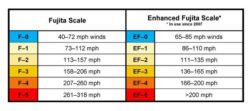
From 2001 to 2004, a panel of engineering and meteorological experts conducted an investigation into the Fujita scale. Their knowledge and efforts led to the creation of a more robust and accurate method of determining a tornado’s intensity: the Enhanced Fujita Scale.
Still based upon a damage analysis methodology, this enhanced version used a combination of damage indicators (types of structures) and degrees of damage for each indicator. It also correlated the wind speed with the visually-observed damage. In 2007, the National Weather Service adopted the Enhanced Fujita scale, and it is still in use today.
Building Storm Shelters
The Enhanced Fujita Scale allowed for more accurate and quantifiable data to be gathered, providing greater knowledge as to how different materials and structures behave in a tornado. Ultimately, this information led to the creation of a standard that would drive better design and construction for safer buildings, stronger products, testing and verification.
Using the 2000 FEMA P-361 guideline as a legacy document, in the summer of 2008, the first version of the ICC 500 Standard for the Design and Construction of Storm Shelters was released. This consensus standard codified the design and construction of commercial storm shelters for both hurricanes and tornadoes. It also set a minimum standard of building for these facilities for governments and various organizations to adopt. Under the International Building Code (IBC), ICC 500 storm shelters became required components of certain types of facilities being built: fire, ambulance, police and 911 call centers, as well as emergency operations centers—and, most relevantly, K-12 school facilities with 50 or more occupants.
As knowledge around building safer and stronger storm shelters expanded, it became apparent that building materials and components such as doors and windows would need to endure specific tests to ensure their ability to withstand the winds, pressures and debris of a tornado. It was also deemed unlikely that many standard components could pass the difficult tests needed to become ICC 500-compliant. One of the most challenging of these was the missile-impact test, which replicates wind-borne debris hitting the component being tested at speeds of up to 250 mph. Stronger materials and sturdier construction became needed to pass the testing, often at a higher cost. This became challenging in that, while these shelters needed to be designed and constructed to safeguard occupants from a tornado, one also had to consider that 99.9% of a storm shelter’s life would be used for another purpose, such as a K–12 gymnasium, which is often the chosen space to serve as the shelter.
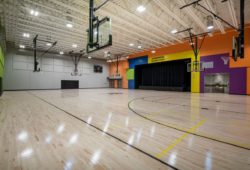
Storm Shelter Lighting
Daylighting—or illuminating buildings using natural light—is very common in these spaces; however, traditional forms of daylighting, such as windows, struggled to pass the impact testing. Skylight manufacturers hadn’t even attempted it. Penetration-protection components like storm doors or shutters could be added to windows to prevent debris from entering the space. But they could also inflate the project’s budget and potentially cause daylighting to be removed from the project altogether.
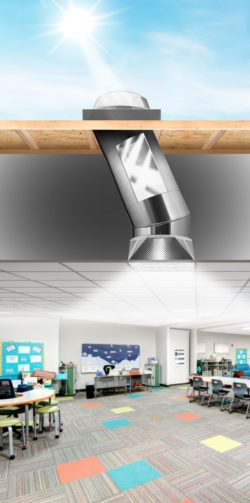
While eliminating forms of daylighting might have helped reduce budget, it could come at a greater cost to the students.
Studies by groups like Heschong Mahone and the University of Oregon have shown that broad-spectrum daylight, when incorporated into learning spaces, can help to increase test scores between 20% to 26%; improve cognitive skills, visibility and mood; and even reduce microbial communities associated with indoor dust by 50%. With such great benefits, removing daylight from these spaces was not ideal.
So, if windows were too expensive, what other options did schools have for daylighting? Before 2018, there really were none, so the storm shelter often became a windowless space.
Solatube Tubular Daylighting Devices (TDDs) are an affordable daylighting solution that have been able to solve the problem of window-less shelters.
TDDs harvest daylight at the rooftop, transfer it down a highly reflective tube and distribute it evenly into an interior space through
a diffuser at the ceiling—with virtually no maintenance.
High-quality Solatube TDD applications already led the industry in certifications, having passed rigorous product testing such as Federal Blast Testing, Factory Mutual Testing and the hurricane coastal requirements in Florida and Texas.
Specific Solatube daylighting models have endured the stringent testing of ICC 500 and are the only top lighting solution to achieve ICC 500 P 361 storm shelter compliance without the need for additional penetration protection.
Daylighting a shelter no longer has to level a school’s budget, and following the testing and code that so many had worked so hard to put in place means that occupants can be assured that this leading tubular daylighting device could stand up to the forces of nature.
If you want to learn more about how to maximize natural light to transform your storm shelter and improve student performance and health, you can call 888.SOLATUBE to set up a free consultation or visit Solatube.com to find your local distributor.